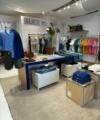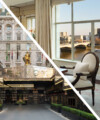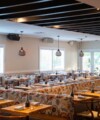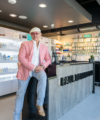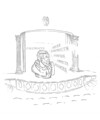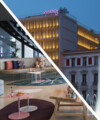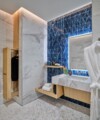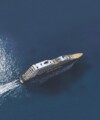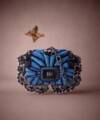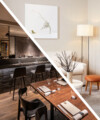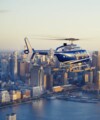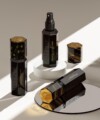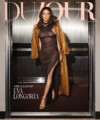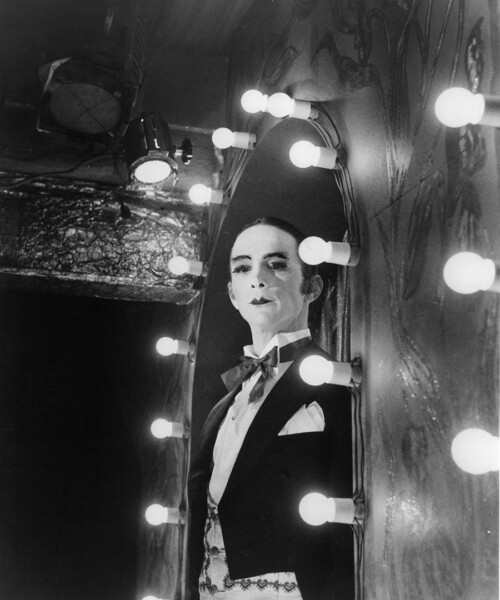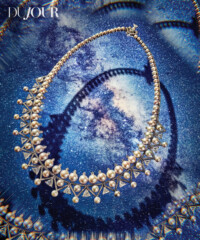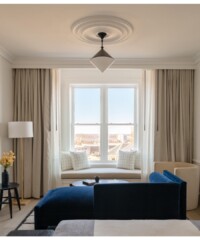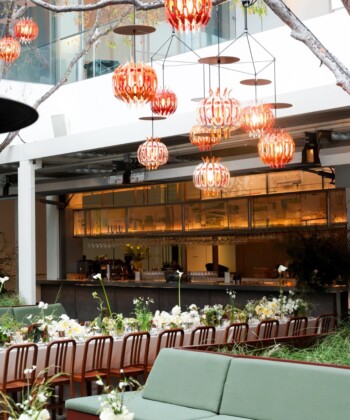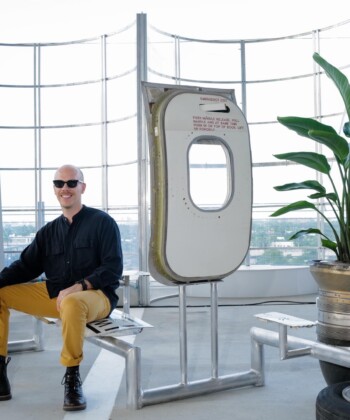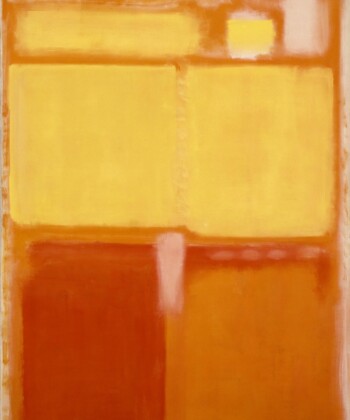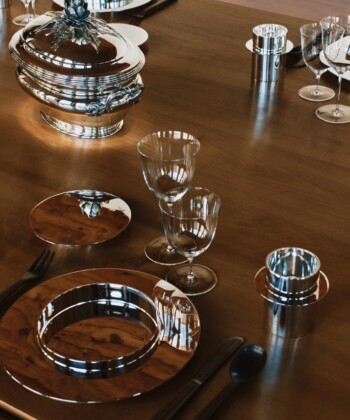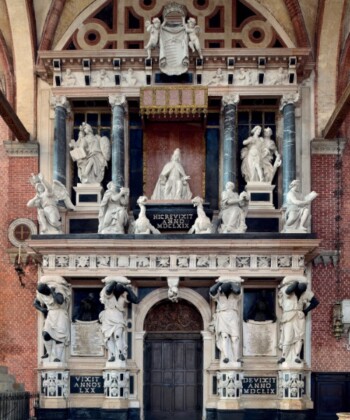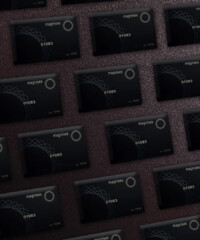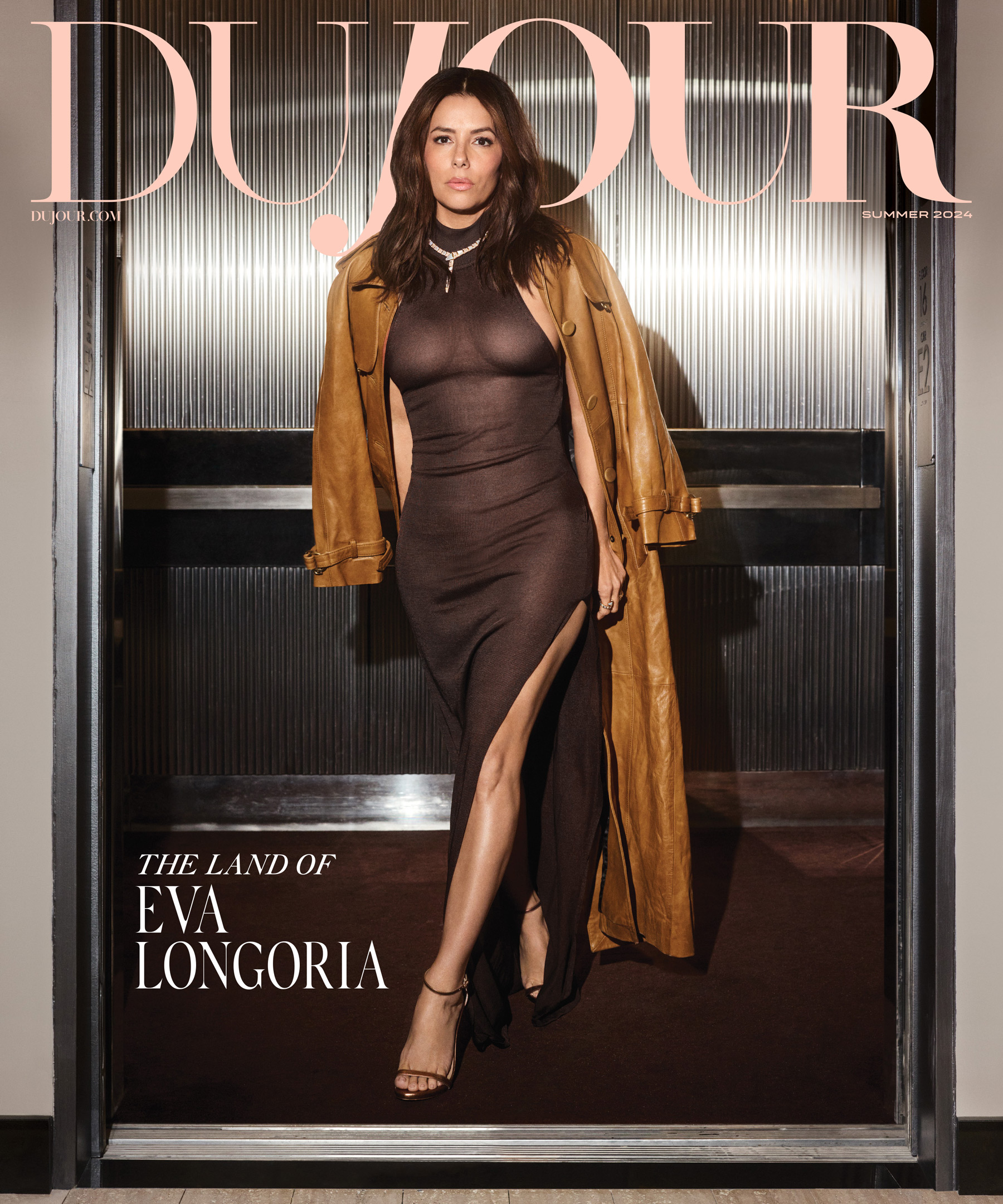Over the past two decades, British painter Jonathan Yeo has explored countless aspects of the human visage. There are the oil portraits of political and media heavyweights including Rupert Murdoch, Tony Blair and David Cameron that capture soft moments behind stern exteriors. There are the collages of the under- and over-sexed crafted from clips out of pornographic magazines (think Sarah Palin and Paris Hilton). And there’s his most recent oil series of plastic surgery patients stretched, tucked and marked up with felt tip pens.
“We read human faces more precisely than any other thing we look at, so I don’t think it’s any accident that many of the best known artists of the past century anyone from Picasso to Warhol to Giacometti to Freud and Bacon—while you don’t necessarily think of them as portrait painters, their best known works are all portraits,” says Yeo, who taught himself how to paint from a small London studio, where friends like model Erin O’Connor and Savile Row tailor Ozwald Boateng would sit for him.
“At the time, neither of us had very much money. Ozwald paid me by making suits for me, which meant that even though I could barely feed myself I was incredibly well dressed,” says Yeo. “So I could go out to art openings looking like I was very successful, which I think was quite helpful.”
It was helpful, indeed. On March 15, Yeo will open a vast mid-career retrospective—incorporating all strains of his singular practice—across the entire contemporary gallery at The Lowry in Manchester. The exhibition is an expansion of Yeo’s acclaimed show last year at the National Portrait Gallery, which featured some 30 paintings but was limited to more traditional oil works.
“We had to make some editorial decisions, but I think they wanted a family-friendly exhibition. I was quite happy with that because I could take my own kids to one of my own shows for a change,” says the artist, who gets to include his infamous 2007 porn collage of George W. Bush at the Lowry. The notorious W piece came on the heels of Yeo’s portrait, dubbed “Proportional Representation,” capturing a then fat-cheeked, white-suited Tony Blair. “The people funding the Bush Presidential Library came to me wanting a portrait of him and they bought some of my Tony Blair studies as well,” says Yeo. “But it didn’t happen so I had all this material so I thought I’d have a little bit of fun.”

Bush, 2007, collage on board; Courtesy of Jonathan Yeo Studio
The ensuing work (pictured above), which the artist planned to send to Bush’s donors in hopes of getting it hung (without notice) in the library, was discouraged by his gallerists at the time and lost him a prestigious commission with the Archbishop of Canterbury. “As soon as the Bush thing happened they quickly let me know I wouldn’t be needed,” laughs Yeo. However, the new work simultaneously introduced his practice to a new audience of artists like Damien Hirst, who became a favored collector and subject. It also caught the attention of bad boy London gallerist Steve Lazarides, who brokered numerous media campaigns—and sales—that put Yeo’s name on the international stage.
“I realized if you were precise with it, you can make an image that’s as complex as you can with a painting. It took much longer than I anticipated—a good one takes a few weeks—but it made me realize you could make very serious images with them,” says Yeo, who loves the “performance aspect” of the collages. “People would look at it and react to it like they’d react to a painting, and then when they realized what it was, their reaction would change. I could use people’s associations with the medium of porn because people have very different relationships with porn due to what they think of it and their hang ups and preconceptions.”
Yeo was also confronted with these preconceptions—or newfound adoption of them—because the collage work took off around the time his second daughter was born. “I was bringing a girl into the world and looking at these images with a slightly more prudish point of view and going, ‘Is it right that we are getting so desensitized to these images being everywhere?’”

Self-Portrait, 2012, oil on canvas; Courtesy of Jonathan Yeo Studio
Emboldened after the success of the collages, Yeo began working on his latest series depicting pre- and-post-op faces and breasts—before and after various plastic surgery procedures.
“I’d been interested in doing something on it just from the perspective of somebody who’s obsessed with faces,” says Yeo, who witnessed (and photographed) numerous surgeries performed around London hopsitals. The experiences resulted in a suite of bodies and faces painted against white, blue and greywashed grids. Amidst these muted backgrounds, the figures and forms protrude, distend and unfurl with taped eyes, intubated mouths and Sharpie-marked nipples that lend a softened, less-clinical touch to what Yeo calls the “lovely undercurrent of savagery about the casual violence that’s going to happen here.”
Though he’s gone back to painting oils of creatives like Kevin Spacey as Richard III and more organically grown politicos—like 16-year-old Pakistani activist Malala Yousafzai, who was shot by Taliban gunmen in 2012 and and whose portrait will be auctioned at Christie’s in May to raise money for The Malala Fund, which campaigns for the educational rights of girls—Yeo says he plans to continue working on the cosmetic surgery series, while building a new venture into sculpture.
“I started off thinking I would only do portraits for a year or two because it was a narrow area and I wanted to expand,” says Yeo. “But actually the more I do it the wider I realize it is.”
Click through the gallery to see works by Jonathan Yeo through the years.
MORE:
An Art World Up and Comer
Domestic Affairs: At Home with Angela Westwater
The Unexpected Art Gallery


